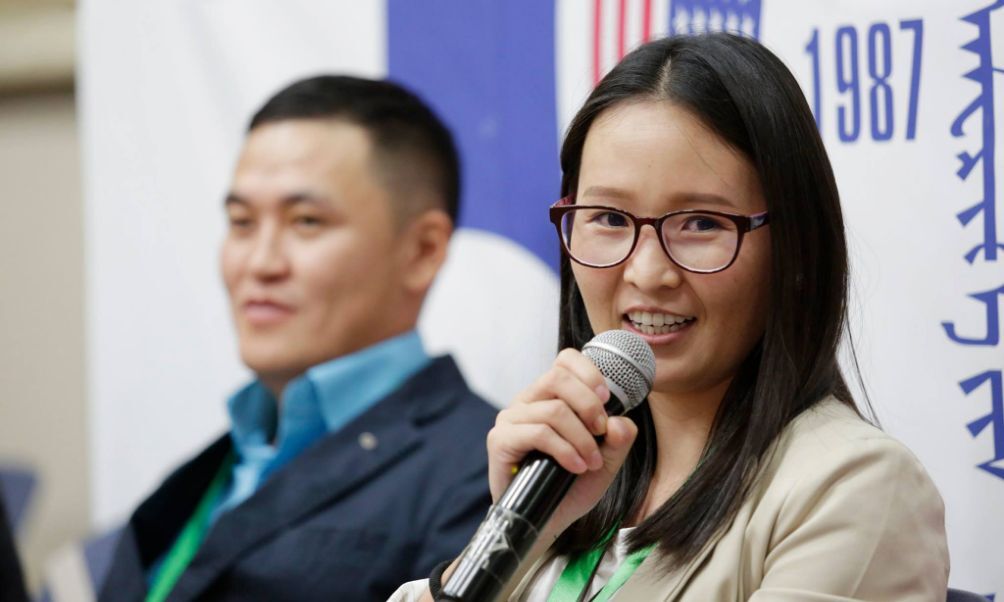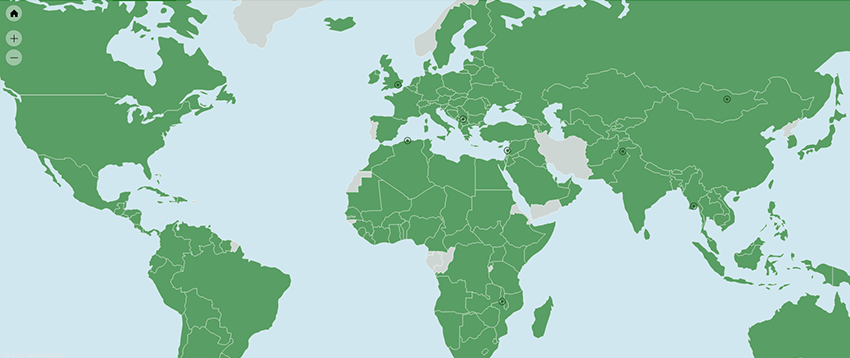-
What We Do
- WHERE WE WORK
-
About Us
 Welcome Message from Carol Jenkins
Welcome Message from Carol JenkinsFor more than 90 years, World Learning has equipped individuals and institutions to address the world’s most pressing problems. We believe that, working together with our partners, we can change this world for the better.
On my travels, I’ve had the opportunity to meet with many of those who have joined us in this mission. In Baghdad, we’ve trained more than 2,300 Iraqi youth who are already giving back at home. In London, our partners in the TAAP Initiative strongly believe that we are all responsible to practice inclusion. And in Vermont, our Experiment in International Living and School for International Training participants prove every day that they have the tools and the determination to change the world.
Please join us in our pursuit of a more peaceful and just world.
- Get Involved
Media Center > Story
Ten Principles for Designing Online and Blended Training
May 27, 2022
World Learning provides best practices to create greater impact for virtual programming

Online experiential learning has been a key feature of World Learning programming for more than a decade. During the COVID-19 pandemic, when online programming became essential to reach participants around the world, our education and exchange experts were at the ready. They created institutional best practices for online programs across all practice areas.
Below are the ten principles World Learning implements for online projects.
1. Follow adult learning principles. Adult learning principles recognize and incorporate participants’ personal needs and experiences into programming. As COVID began, World Learning passed on extensive knowledge of these principles to Lebanon’s Ministry of Education as it designed and developed online teacher training programs. As a result, the Ministry created its own contextualized programming that addressed the individual needs of teachers.
2. Foster reflective practice. To bridge theory to practice, reflecting on concrete experiences and doing action planning are key, which requires time and feedback. Well-structured, asynchronous discussion boards can provide both, allowing reflection to flourish. Since 2021, the SIT TESOL Certificate has been offered in a fully online format comprised of workshops, supported lesson planning, practice teaching, and post-teaching reflection. The course includes a module that explicitly teaches and provides feedback on reflective skills.

3. Scaffold everything. Because much of online programming happens when a facilitator is not immediately available, good online programming includes proactive scaffolding. This allows participants to smoothly navigate the course with the help of clear instructions and tailored levels of support. In Quality Instruction Towards Access and Basic Education Improvement 2, World Learning’s USAID-supported early-grade reading and math program in Lebanon, detailed teachers’ notes that parallel previous teacher training topics are systematically included in all teaching and learning materials (TLM). These inform teachers on how to adapt materials to in-person or distance teaching, enabling them to meet the needs of students in their current context, even as these continue to shift in Lebanon.
4. Keep it relevant and real. It’s harder to keep participants’ attention online, so it’s important to keep any activity relevant to their real life and professional goals. In the English Language Investment and Training for Economic Success program in Iraq, unemployed youth ages 18 to 25 raised their English proficiency, employability, and professional networking skills through content and activities that were immediately relevant to their goal of gaining a meaningful job in the private sector. Additionally, in the Iraqi Young Leaders Exchange Program, youth ages 15 to 22 participated in small online group dialogues and workshops on topics relevant to both their digital exchange and real-life experiences, causing a greater learning impact.
5. Design light. The internet can be severely limited for many participants, so it’s important to provide flexible content that adheres to a participant’s own pace, schedule, and technological capabilities. Mobile- and data plan-friendly modular activities have been crucial for success across all of World Learning’s online programming. Additional strategies to reach “low-tech” communities include avoiding too many videos; using low-resolution photos and graphics to facilitate downloads and screen sharing; and providing materials as PDFs so participants can work offline.
6. Integrate Universal Design for Learning (UDL). UDL ensures that every level of course design is inclusive and motivating for the widest range of backgrounds and capabilities. World Learning has led UDL trainings that included participants from Morocco’s Ministry of Education and Creative Associate’s early grade reading project, National Program for Reading. As a result, the participants were able to begin creating online teacher trainings that could work for learners across the full spectrum of learning styles and abilities.

7. Foster community. Fostering a sense of community, peer collaboration, and social presence can go a long way in increasing participant retention and learning. For five years, World Learning has run the Madrassa English Language Teacher Training (MELT) program in India. MELT supports self-study online teacher development by organizing participants in small groups. Led by a trained peer facilitator, these small groups allow participants to support and encourage each other, share reflections, and meet in-person or virtually for standardized workshops that practice their teachings. Six months after graduating, 90% of 2021 participants said they were confident in applying concepts of learner-centered, communicative teaching in their classrooms.
“I am glad that I completed the course in a short time, and at the same time, I am sad to leave such a wonderful community. I really enjoyed reading about teachers’ experiences with students. That really gave me new ideas to implement in my classroom.” — Maha, a participant from Egypt, as she finished the OPEN MOOC Content-Based Instruction in May 2022.
8. Only use technology to improve. Technology can facilitate learning, but only if used as a pedagogical tool, and not as an end in itself. World Learning’sTraining for Online English Teaching Course, designed for teachers from the Instituto de Relaciones Culturales in Monterrey, Mexico, presented a range of online tools that could be applied to both course design and delivery. Participants learned how to design activities that work for different learners and support students with low technology skills or no reliable network connectivity.
9. Ensure cybersecurity. It’s important to ensure participants’ safety and rights are protected online, especially when using platforms that track cyber activity or introduce security vulnerabilities.As an example, World Learning’s civil society programs connect leaders for a greater impact. But their safety would be in danger if there were a digital security breach. Encrypted apps are used and precautionary measures are taken to provide safe online spaces for participants to gather.
10. Keep it open. Open educational resources (OER) are a powerful mechanism for keeping costs down while driving innovation and professional development. In our Content-Based Instruction Massive Open Online Course (MOOC), offered through the OPEN program from April to May 2022, English teachers around the world learned how to find and adapt OER for their current teaching needs.
These principles can be found in World Learning’s 10 Principles for Designing Online and Blended Training.





